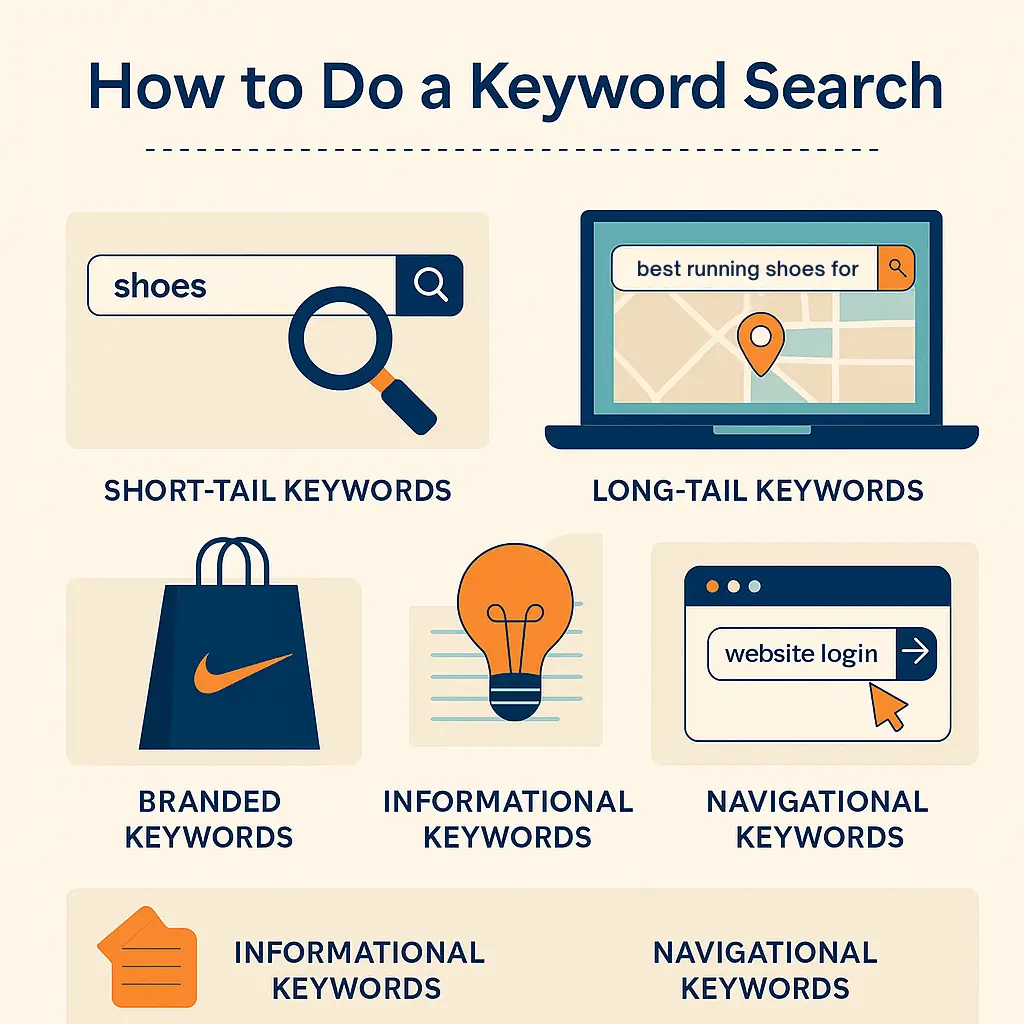Ads: From Clicks to Customers
From Clicks to Customers: The Power of Ads in Promotion
In today’s fast-paced digital world, digital advertising and Ads are essential for businesses to connect with their audience and promote their products. One of the most powerful tools for this is advertising.
Whether you run a small business or work in marketing, knowing how different ad strategies work can help you get better results.
This article will explain the basics of Ads and advertising. It will cover popular platforms like Facebook and Google. We will discuss key strategies to use. We will also look at how free Ads can be helpful.
The Power of Effective Ad Campaigns
An effective ad campaign is a key element of any digital advertising strategy.
Advertising campaigns are pivotal in creating brand awareness and driving sales. An effective ad campaign captures the audience’s attention, delivers a compelling message, and persuades them to take action. To achieve this, it’s crucial to understand your target market, set clear objectives, and choose the right channels for your Ads.
Understanding Your Audience
Before diving into any advertising effort, you need to know who you’re targeting. Understanding your audience’s demographics, interests, and behaviors allows you to tailor your Ads to their preferences.
Utilize tools like customer surveys, market research, and social media analytics to gather valuable insights. These insights help identify potential gaps in the market that your product or service can fill, providing a competitive edge.
Moreover, consider developing customer personas to better visualize and understand your ideal customers. Personas can help in crafting messages that resonate on a personal level, enhancing engagement. Regularly updating these personas ensures they remain relevant as market conditions and consumer behaviors change.
Keeping up with your audience’s changing needs and preferences helps your Ads stay relevant to them.
Setting Clear Objectives
Every ad campaign needs clear goals. You might want more website visits, higher sales, or better brand awareness. Having specific objectives helps you plan and track results.
Set key performance indicators (KPIs) to measure how well your campaign is doing. KPIs give you clear numbers to see what’s working and where to improve.
Make sure your goals match your overall business priorities. For example, if you’re focusing on brand awareness, track reach and engagement. If your aim is to boost sales, focus on conversions and return on investment (ROI).
Having clear goals also helps your team and partners stay on the same page and work toward shared results.
Choosing the Right Channels
Choosing the right platforms to advertise on is key to reaching the right people. Each platform plays a unique role in your digital advertising mix.
For example, Instagram works well for visual Ads and younger users, while LinkedIn is great for B2B marketing. Knowing where your audience spends time online helps you get better results.
Try using different platforms to see what works best for your business. A mix of channels can help you reach more people and boost engagement.
Keep tracking how each platform performs and adjust your strategy to make the most of your budget and meet your goals.
Exploring Advertising Techniques
The advertising landscape offers a plethora of techniques to choose from. Selecting the right approach depends on your business goals, budget, and target audience. Here are some popular advertising techniques:
Social Media Advertising
Social media platforms like Facebook and Instagram offer targeted Ads options. These platforms allow you to reach a specific audience based on age, location, interests, and more.
Google Ads provides robust targeting features and analytics to optimize your campaigns. By leveraging these tools, businesses can create highly personalized Ads that resonate with their target audience.
Social media isn’t just about running Ads—it’s about building a community. Use polls, contests, and fun content to get people involved and make them feel connected to your brand.
Listen to comments and feedback to see how people view your business. Use this information to improve your strategy. A strong social media presence helps build trust, loyalty, and brand awareness.
Search Engine Advertising
Google Ads is one of the most powerful tools in digital advertising, helping businesses reach ready-to-buy audiences. With pay-per-click (PPC) Ads, you bid on keywords. This helps show your Ads in Google’s search results. It brings in visitors who are ready to buy.
To run a strong PPC campaign, choose the right keywords and write Ads that grab attention. Use negative keywords to block traffic that isn’t relevant, so your Ads reach the right people.
Keep testing and improving your Ads, landing pages, and bids to get better results. Since search Ads change quickly, regular updates and monitoring are key to staying ahead.
Display Advertising
Visual content plays a major role in digital advertising, especially when trying to build brand awareness through banners and videos.
Display Ads appear on websites, apps, and social media platforms in the form of banners or videos. They are effective in building brand awareness and retargeting users who have previously interacted with your site.
The visual nature of display Ads allows for creative expression and can make a lasting impression on potential customers.
To maximize the impact of display advertising, focus on creating visually appealing designs that align with your brand’s identity. Use A/B testing to experiment with different visuals and messages to identify what resonates best with your audience.
Additionally, consider using programmatic advertising to automate the buying process and target specific audiences with precision. Display Ads, when executed strategically, can significantly enhance brand visibility and drive engagement.
Leveraging Free Ads
Content Marketing
Creating valuable content like blog posts, videos, and infographics can attract organic traffic to your website. By optimizing your content for search engines, you increase your chances of appearing in search results without paying for Ads.
Quality content can establish your brand as an authority in your industry, building trust with your audience.
Develop a content calendar to ensure consistent output and alignment with your marketing goals. Focus on creating evergreen content that remains relevant over time, driving sustained traffic and engagement.
Encourage social sharing to amplify your reach and consider guest blogging on reputable sites to expand your audience. Content marketing is a long-term strategy that can yield significant returns when executed effectively.
Social Media Engagement
Engaging with your audience on social media platforms can organically boost your brand visibility. Encourage user-generated content, respond to comments, and participate in relevant conversations to build a loyal community. Authentic interactions foster trust and can lead to increased brand advocacy.
Use social media analytics to track engagement metrics and identify which types of content resonate most with your audience. Tailor your content strategy based on these insights to maintain relevance and engagement.
Collaborate with influencers or brand ambassadors to reach new audiences and enhance credibility. Social media engagement is a powerful tool for building relationships and driving organic growth.
Online Directories
Listing your business in online directories like Google My Business, Yelp, and TripAdvisor can enhance your online presence. These platforms often feature user reviews, which can influence potential customers’ decisions.
A well-optimized directory listing can improve local SEO and increase visibility among users searching for businesses like yours.
Ask happy customers to leave good reviews. Regularly update your business information to ensure accuracy and consistency across all platforms.
Leveraging online directories effectively can drive traffic to your business and enhance your reputation in the digital landscape.
Crafting Compelling Ads
High-performing digital advertising campaigns combine clear messaging, visual appeal, and strong targeting.
Attention-Grabbing Headlines
Your headline is the first thing users see. Make it catchy and relevant to your audience’s interests or pain points. Use action words to encourage clicks. A strong headline piques curiosity and draws users in, setting the stage for your message.
Clear and Concise Messaging
Keep your message simple and to the point. Highlight the benefits of your product or service and include a strong call-to-action (CTA) that prompts users to take the next step. Clear messaging ensures your audience understands the value proposition and what action they should take.
Eye-Catching Visuals
Use high-quality images or videos that align with your brand’s identity. Visuals should complement your message and create an emotional connection with your audience. The right visuals can enhance the impact of your Ads, making them more memorable and engaging.
Measuring Ad Performance
Click-Through Rate (CTR)
CTR measures the number of clicks your ad receives divided by the number of impressions. A high CTR indicates that your Ads are resonating with your audience.
Conversion Rate
The conversion rate shows the percentage of users who do what you want after clicking your Ads. A high conversion rate signifies effective ad targeting and messaging.
Return on Ad Spend (ROAS)
ROAS calculates the revenue generated for every dollar spent on Ads. A high ROAS means your ad campaigns are profitable and worth continuing.
✅ Conclusion
Promotion through Ads is an important part of any marketing plan. By knowing your audience, setting clear goals, and using both paid and free ad methods, you can create campaigns that get real results.
Keep track of how your Ads are doing and use the data to improve them over time. With the right strategy, Ads can help your business grow and reach more people.
Stay updated with the changing digital world and adjust your approach to stay ahead of the competition. This will help you build long-term success and growth.
How to Do a Keyword Search: Master SEO Strategies Step-by-Step
In today’s digital world, mastering how to do a keyword search is essential for anyone looking to improve their website’s visibility. Whether you are a business owner, blogger, or digital marketer, learning to do keyword searches can help you. It can bring more visitors and grow your online presence—especially when paired with effective social media strategies for businesses, which can amplify your reach and engagement across platforms.
This guide will take you through each step of the SEO process and help you build the skills to use it effectively. Keyword research isn’t just about finding popular search terms. It’s about understanding what people really want when they search. By analyzing user behavior and spotting trends, you can create content that matches your audience’s needs— helping you attract more visitors and increase traffic on your site.
Understanding the Importance of Keyword Search
Keywords are the backbone of search engine optimization (SEO). They are the phrases that people type into search engines like Google when they’re looking for information. By optimizing your website with the right keywords, you can make it easier for search engines to find and rank your content. This increases your visibility and can lead to more traffic, ultimately driving business success.
Effective keyword search can also help you understand your audience better. By analyzing which keywords are bringing people to your site, you can gain insights into their needs and preferences. This information helps you create content that better meets your visitors’ needs, making their experience better and helping you reach your business goals.
Why Keywords Matter
Keywords help search engines understand what your content is about. Using the right keywords helps your content appear in search results.
Keywords also help you build trust in your area of expertise. When you regularly use the right keywords, people and search engines see your site as a reliable source. This can keep your current visitors returning and attract new ones. Search engines are more likely to show your site to others looking for the same topics.
Types of Keywords
Different types of keywords help make SEO more effective:
Short-Tail Keywords (Head Keywords)
-
Definition: These are 1–2-word phrases like “shoes” or “digital marketing.”
-
Purpose: They have high search volume and are extremely competitive.
-
Use Case: Good for building general awareness but may not convert well because of vague search intent.
-
Example: “Coffee” — could mean someone wants to buy coffee, learn about coffee, or find a coffee shop.
Long-Tail Keywords
-
Definition: These are longer, more specific keyword phrases, usually 3+ words.
-
Purpose: They have lower search volume but higher conversion potential because of clear intent.
-
Use Case: Great for targeting niche audiences and answering specific questions.
-
Example: “Best organic coffee beans for cold brew.”
Branded Keywords
-
Definition: Keywords that include your brand name or variations of it.
-
Purpose: Help users find your specific products or services.
-
Use Case: Important for brand recognition and protecting your brand’s search space.
-
Illustration: “Nike sneakers for running” or “Evaluation of HubSpot CRM.”
Non-Branded Keywords
-
Definition: Keywords that don’t include brand names.
-
Purpose: Attract new users who aren’t already familiar with your brand.
-
Use Case: Useful for reaching broader audiences in the early stages of the customer journey.
-
Example: “Cheap running shoes.”
Geo-Targeted Keywords (Local Keywords)
-
Definition: Keywords that include location-specific terms.
-
Purpose: Drive traffic from a specific geographic area.
-
Use Case: Essential for local businesses or services.
-
Example: “Best sushi near me.”
Informational Keywords
-
Definition: Keywords used when people are looking for answers or learning something new.
-
Purpose: Bring in new visitors.
-
Use Case: Great for blog posts, how-to guides, and FAQs.
-
Example: “How to fix a leaking faucet.”
Navigational Keywords
-
Definition: Keywords used when someone is looking for a specific website or brand.
-
Purpose: Help users get directly to your site.
-
Use Case: You want to make sure your site appears at the top when someone searches for your brand.
-
Example: “LinkedIn login” or “ChatGPT OpenAI.”
Transactional Keywords
-
Definition: Keywords that show a strong intent to take action, like buying or signing up.
-
Purpose: Drive conversions.
-
Use Case: Target these on landing pages or product pages.
-
Example: “Buy wireless headphones” or “Sign up for email marketing software.”
How to Do a Keyword Search
Now that you understand the importance of keywords, let’s dive into how to do a keyword search effectively. This process involves several steps that will help you identify the most relevant keywords for your content and ensure that your SEO strategy is both comprehensive and effective.
Step 1: Identify Your Goals
Before you start searching for keywords, you need to be clear about your goals. Are you trying to increase traffic, boost sales, or improve brand awareness? Your goals will influence the type of keywords you choose. Understanding your objectives will help you focus your efforts on keywords that align with your desired outcomes, making your SEO strategy more targeted and effective.
Additionally, having clear goals allows you to measure the success of your keyword strategy more accurately. By setting specific, measurable objectives, you can track your progress and make data-driven decisions to refine your approach. This will not only help you achieve your goals but also maximize the return on investment for your SEO efforts.
Step 2: Brainstorm Ideas
Start by brainstorming a list of words and phrases related to your topic. Think about what your audience might be searching for. If you’re not sure, try asking friends or colleagues for their input. This initial brainstorming session should be broad and creative, allowing you to explore a wide range of potential keywords.
Consider using mind-mapping techniques to visualize connections between different keyword ideas. This can help you uncover new angles and perspectives, leading to a more comprehensive list of potential keywords. Remember, the goal is to generate as many ideas as possible, which you can later refine and prioritize.
Step 3: Use a Keyword Tool
Keyword tools can help you find keywords and provide data on search volume and competition. Here are some popular tools:
-
Google Keyword Planner: A free tool that provides keyword ideas and traffic estimates. It’s an excellent starting point for beginners.
-
SEMrush: A comprehensive tool that offers insights into keyword difficulty and competitive analysis…
- Ahrefs: Alternative tool for free keyword ideas and difficulty scores
Step 4: Analyze the Competition
Once you have a list of potential keywords, analyze your competition. Look at the top-ranking pages for those keywords and see what they’re doing well. This can help you identify gaps in your own content and opportunities to stand out. By understanding what works for your competitors, you can refine your strategy to offer something unique and valuable to your audience.
Consider factors such as content quality, user engagement, and backlink profiles when analyzing competitors. This comprehensive approach will provide insights into why certain pages rank well and what you can do to improve your own rankings. Use this information to enhance your content and develop strategies that capitalize on your competitors’ weaknesses.
Step 5: Choose the Right Keywords
Select keywords that align with your goals and have a good balance of search volume and competition. When deciding how to do a keyword search, this step is crucial for results-driven SEO.
It’s often a good idea to target a mix of short-tail and long-tail keywords to reach a broader audience. This balanced approach ensures that you can attract both high-volume traffic and highly targeted visitors who are more likely to convert.
Prioritize keywords that are most relevant to your content and audience. Consider factors such as user intent, keyword difficulty, and potential ROI when making your selections. By focusing on the right keywords, you can maximize the effectiveness of your SEO strategy and achieve your desired outcomes.
Implementing Keywords in Your Content
Once you’ve chosen your keywords, it’s time to implement them into your content. Here’s how:
-
Title Tag: Include your primary keyword in the title tag, ideally near the beginning. This helps search engines understand the main topic of your page and can improve your click-through rates.
-
Meta Description: Use your main keyword in the meta description to improve click-through rates. A compelling meta description can entice users to click on your link over others, increasing your site’s traffic.
-
Headings/Subheadings: Use keywords in headings and subheadings to organize content and improve readability. This not only helps search engines understand your content structure but also enhances user experience.
-
Content: Naturally incorporate keywords throughout your content. Avoid keyword stuffing, as it can harm your rankings. Focus on creating high-quality, informative content that naturally includes your keywords.
-
Image Alt Text: Use keywords in image alt text to help search engines understand the content of your images. This can improve your chances of appearing in image search results, driving additional traffic to your site.
Off-Page SEO
Off-page SEO involves external activities like building backlinks, which support visibility…
- Off-page SEO involves activities that occur outside of your website to improve its ranking. Building quality backlinks to your content using your keywords can enhance your site’s authority and search engine ranking. Focus on acquiring backlinks from reputable sites within your industry to boost your credibility and visibility.
- Engage in guest blogging, influencer outreach, and social media marketing to promote your content and generate backlinks. These efforts can increase your content’s reach and drive more traffic to your site, ultimately improving your search rankings.
Monitoring and Adjusting Your Keyword Strategy
SEO is a continuous effort, so regularly monitoring your performance is essential.
-
Track Rankings:
- Use tools like Google Analytics or SEMrush to track your keyword rankings over time. This will help you understand which keywords are driving traffic and which ones need adjustment. Regularly monitoring your performance allows you to identify trends and make informed decisions about your SEO strategy.
- Analyze key metrics such as organic traffic, bounce rates, and conversion rates to assess the effectiveness of your keywords. Use this data to refine your approach and focus on keywords that deliver the best results. This continuous optimization process is essential for maintaining and improving your search rankings.
-
Adjust Strategy:
SEO is not set-it-and-forget-it. Search trends change, and so should your strategy. Regularly update your keyword list and optimize your content to keep up with changes in search behavior. Staying informed about industry developments and adapting to new trends can give you a competitive edge in the ever-evolving digital landscape.
Experiment with new keywords, content formats, and promotional strategies to see what works best for your audience. Be open to change and willing to adjust your approach based on data and insights. This proactive mindset will ensure that your SEO efforts remain effective and deliver long-term success.
Conclusion
Mastering how to do a keyword search is an essential skill for anyone looking to improve their website’s visibility. By following this step-by-step guide, you’ll be on your way to optimizing your content for search engines and attracting more visitors to your site. Remember, successful SEO requires patience and continuous effort, but the results are worth it.
By understanding how to do a keyword search, you can create content that resonates with your audience and ranks well in search engines. Happy optimizing!
Content Creation in Digital Marketing
Before diving into content creation in digital marketing, it’s crucial to understand your audience. Knowing who they are, what they like, and what they need will guide your content strategy and ensure that your posts resonate with them.
Conduct Audience Research
Start by analyzing your current audience. Use tools like Google Analytics, social media insights, and customer feedback. These tools help you gather data about demographics, preferences, and behavior. This information will help you create a more targeted content strategy.
Dive deeper into social media analytics to uncover trends in engagement and interaction. Look at what content types and topics generate the most interest and adapt your strategy accordingly.
Explore third-party research and industry reports to gain a broader understanding of market trends and consumer behavior. This can provide additional context and help you identify gaps in your current strategy. For example, check out Google Audience Insights to strengthen your analysis.
Develop Detailed Buyer Personas
Develop detailed buyer personas that represent your ideal customers. Include information such as age, gender, interests, challenges, and buying habits. These personas will help you create content. They ensure your posts meet the needs and interests of your audience.
Incorporate psychographic details into your personas, such as values, attitudes, and lifestyle. This will help you craft messages that resonate on a deeper emotional level.
Regularly update your buyer personas based on new insights and data. As your audience evolves, so should your understanding of who they are and what they want.
Leverage Audience Feedback
Engage directly with your audience to gather feedback on your content and brand. Use surveys, polls, and direct messages to solicit opinions and suggestions.
Encourage audience interaction through comments and discussions on your social media posts. This not only provides valuable feedback but also strengthens community engagement.
Look at feedback to find common themes or concerns. Use these insights to improve your content strategy and better meet audience needs.
Developing a Content Strategy
Once you know your audience, create a content strategy. This strategy should match your business goals and connect with your audience. A solid content strategy is a cornerstone of content creation in digital marketing.
Define Your Goals Clearly
-
Clearly define what you want to achieve with your social media content.
-
Break down your goals into specific, measurable objectives that you can track over time.
-
Consider short-term and long-term goals to maintain a balanced strategy.
Choose the Right Platforms Strategically
-
Not all social media platforms are created equal. Choose platforms that align with your audience’s preferences and your content goals. For example, Instagram is great for visual content, while LinkedIn is ideal for professional and B2B content.
-
Evaluate each platform’s user demographics and engagement features to determine the best fit for your brand.
-
Experiment with emerging platforms and trends but prioritize those that show promise for your specific audience and goals.
Plan Your Content Calendar Carefully
-
Create a content calendar that outlines your posting schedule and the types of content you’ll share. This will help you stay organized and ensure a consistent flow of content. Include a mix of content types, such as blog posts, videos, infographics, and user-generated content, to keep your content diverse and engaging.
-
Incorporate special events, holidays, and industry milestones into your calendar to ensure timely and relevant content.
-
Use the calendar to plan strategic content promotions and collaborations that align with your overall marketing strategy.
📷 Insert image here (ALT text: “Visual content calendar for content creation in digital marketing”)
Content Creation Ideas and Topics
Coming up with fresh content ideas can be challenging. Here are some topics and ideas to inspire your content creation process.
Educational Content That Adds Value
-
Create content that educates your audience about your industry, products, or services. This could include how-to guides, tutorials, or explainer videos. Educational content positions your brand as an authority and builds trust with your audience.
-
Collaborate with industry experts to provide in-depth insights and enhance the credibility of your educational content.
-
Offer interactive content such as quizzes or webinars to engage your audience and provide value in a more dynamic format.
Behind-the-Scenes Insights
-
Give your audience a glimpse behind the curtain by sharing behind-the-scenes content. This could include day-in-the-life videos, office tours, or employee spotlights. Such content humanizes your brand and fosters a deeper connection with your audience.
-
Highlight team achievements and milestones to showcase your company culture and values.
-
Share stories of challenges and successes to provide an authentic perspective on your brand’s journey.
Encourage User-Generated Content
-
Encourage your audience to create content related to your brand. This could be in the form of reviews, testimonials, or photos of them using your products. User-generated content not only provides you with fresh material but also builds community and trust.
-
Create branded hashtags to make it easy for users to share their content and for you to discover it.
-
Run contests or challenges that incentivize user participation and reward creativity and engagement.
Engage with Trending Topics and Challenges
-
Stay relevant by participating in trending topics and challenges. This shows that your brand is in tune with current events and trends. However, ensure that the trend aligns with your brand values and audience interests.
-
Create content that offers a unique perspective on trending topics, adding value to the conversation.
-
Use trends as an opportunity to engage in real-time marketing, capitalizing on moments that resonate with your audience.
Seasonal and Holiday Content Planning
-
Capitalize on seasonal events and holidays by creating themed content. This could include holiday promotions, seasonal tips, or festive greetings. Such content is timely and can boost engagement.
-
Plan seasonal campaigns well in advance to ensure timely execution and maximize impact.
-
Adjust your messages to match the feelings and themes of each season or holiday. This helps you connect better with your audience.
Content Creation Tools
Leveraging the right tools can streamline your content creation process and enhance the quality of your posts. Here are some essential tools to consider for more effective content creation in digital marketing:
Utilize Graphic Design Tools
-
Tools like Canva and Adobe Spark allow you to create stunning visuals without needing advanced design skills.
-
Explore advanced features and integrations that can enhance your design process and output.
-
Use design tools to maintain brand consistency by creating and saving templates for future use.
Invest in Video Editing Software
-
For video content, consider using tools like Adobe Premiere Pro or iMovie.
-
These tools enable you to edit and enhance your videos, adding effects, transitions, and music to create engaging video content.
-
Experiment with different video formats, such as live streams or animated videos, to diversify your content offerings.
Employ Social Media Management Platforms
-
Platforms like Hootsuite and Buffer allow you to schedule and manage your social media posts across multiple platforms.
-
Use automation features to streamline repetitive tasks and focus on strategic content development.
-
Analyze platform-specific data to tailor your content strategy for each social media channel.
Partner with Content Creation Companies
-
If managing content creation in-house is overwhelming, consider partnering with content creation companies.
-
These companies specialize in creating custom content tailored to your brand and audience.
-
Evaluate potential partners based on their industry expertise, portfolio, and client testimonials.
-
Collaborate closely to ensure alignment with your brand voice and goals.
-
For example: Best Content Writing Courses Online – CrownForgeCreations helps you and your company grow.
Measuring Success and Adjusting Your Strategy
To ensure your strategy for content creation in digital marketing is effective, measure its success and iterate accordingly.
Track Key Metrics Consistently
-
Monitor KPIs like engagement, reach, conversions, and follower growth.
-
Set benchmarks and compare performance against industry standards.
-
Use data visualization tools to present your metrics clearly.
Analyze and Optimize Regularly
-
Review what’s working and what isn’t.
-
Use insights to tweak your content direction.
-
A/B test formats and headlines for better results.
-
Stay updated on evolving best practices in content marketing.
Stay Flexible and Adapt Quickly
-
The digital space moves fast—adaptation is key.
-
Be ready to evolve your platform choices, tone, or formats.
-
Monitor competitors to spot opportunities.
Conclusion
Creating content for social media marketing isn’t just about posting consistently—it’s about smart content creation in digital marketing that speaks to the right audience, using the right tools, backed by the right strategy.
Focus on value, not volume. One great post can outperform ten average ones.
Best Content Writing Courses Online
Best Content Writing Courses Online: Your Guide to a Smarter Career in 2025
In today’s fast-paced digital world, learning from the best content writing courses online is essential for anyone entering digital marketing. It goes beyond just writing—content creation is now a key element of marketing, brand development, and customer engagement. What strategies can you use to stand out as a content writer? One of the best ways is by earning a content writing certification.
In this article, we’ll explore various content writing certifications available. We’ll discuss their benefits, the best courses for content writing, and how to choose the right one for you.
Why Content Writing Certification Matters: Enhance Your Career
Whether you’re a freelance writer or working in marketing, the best content writing courses online can greatly improve your career opportunities. Here’s how:
-
Boost Your Credibility: Certification is proof of your expertise and dedication. It shows employers and clients that you have the skills to create high-quality content that meets industry standards.
-
Job Opportunities: Certified writers are more likely to get jobs that pay better. This is because they have special skills in content creation and SEO.
-
Specialty Options: Choosing certifications in SEO writing, copywriting, or technical writing helps you focus on specific areas. This can improve the value of your skills.
-
Networking and Collaboration: Many certification courses allow you to network with industry professionals and peers. This can lead to collaboration opportunities or new projects.
-
Updated Knowledge: As the digital landscape evolves, staying current with the latest trends and techniques is essential. Content writing courses online ensure you’re up-to-date on the latest writing styles, SEO strategies, and digital marketing trends.
What Will You Learn in Content Writing Courses?
Content writing certification courses cover various essential topics for effective content creation. Here’s what you can expect to learn:
-
Basic Writing Skills
Most courses start with grammar, punctuation, and sentence structure. Understanding the fundamentals is essential for writing compelling and readable content. -
SEO and Content Optimization
One of the most important aspects of content writing today is SEO (Search Engine Optimization). Courses will show you how to create SEO-friendly content that ranks high on Google. You will learn about keyword research, using long-tail keywords, and structuring content for on-page SEO. -
Content Strategy Development
Creating content isn’t just about writing well—it’s also about understanding content strategy. Learn how to plan, organize, and deliver content that aligns with business goals and engages your audience. -
Audience Engagement
Crafting content is not just about getting information across but about connecting with your audience. Learn how to write content that speaks directly to your target demographic. -
Content Marketing
Learn how content is important in digital marketing. Discover how to create content that boosts conversions, traffic, and brand awareness.
How to Choose the Right Content Writing Course
When selecting a course, consider your learning style, career goals, and budget. Here’s a breakdown to help you choose:
1. Beginner vs. Advanced Courses
-
Beginner Courses: If you are new to writing or want to improve your skills, start with beginner content writing courses. These courses focus on writing style, grammar, and how to structure content.
-
Advanced Courses: For experienced writers who want to improve their skills, advanced courses are a great choice. These courses focus on areas like SEO content writing, copywriting, and email marketing.
2. Course Duration and Flexibility
Online content writing courses offer flexibility, allowing you to learn at your own pace. Some courses may offer certification in just a few weeks, while others may take months to complete. Choose a course that fits your schedule and commitment level.
3. Interactive Features and Mentoring
Some courses provide direct access to instructors, mentoring sessions, and peer reviews. This level of engagement can be especially valuable in improving your skills and getting real-world feedback.
4. Course Reviews and Reputation
Before enrolling, always check reviews and ratings from previous students. Check for feedback on how useful the course content was. Also, see if students were happy with their certification.
Top Platforms Offering Online Content Writing Courses
Here are some of the top-rated online content writing courses that are highly regarded in the industry:
1. Coursera
Coursera offers high-quality content writing courses from universities like the University of California, Irvine. Their courses cover everything from SEO writing to creative content development. You’ll earn certifications from respected institutions, adding value to your resume.
2. Udemy
Udemy is another excellent platform with an array of content writing courses. They provide courses for all levels. You can learn about SEO copywriting, digital marketing writing, and creating content for blogs and websites. Many courses also come with lifetime access and regular updates.
3. LinkedIn Learning
LinkedIn Learning provides content writing courses that focus on the practical aspects of writing for business and digital media. Their courses cover different areas, from SEO content to social media writing. This makes them great for marketers and new content creators.
4. HubSpot Academy (Free Courses)
For beginners, HubSpot Academy has free courses on content writing. These courses teach the basics of content creation, SEO, and content marketing. You can also earn a certification to share on your LinkedIn profile.
5. Skillshare
Skillshare offers hands-on, project-based courses in content writing. If you prefer learning through practice, Skillshare’s courses might be a perfect choice. You’ll have access to a community of learners and experts for guidance and support.
Free Writing Certifications You Can Start Today
For those on a budget, there are several platforms that offer free content writing courses with certificates. These are perfect for newcomers who want to get their feet wet without committing financially. Here are some popular options:
-
Alison: Offers a wide range of free courses that cover everything from SEO fundamentals to advanced writing strategies.
-
HubSpot Academy: Their free content writing and marketing courses also come with certification upon completion.
Paid Writing Courses: Investing in Your Future
Free courses are a great starting point. However, paid courses usually offer more detailed content and advanced topics. They also often include one-on-one mentoring. Courses from platforms like Coursera, Udemy, and LinkedIn Learning can significantly boost your career. These courses provide in-depth knowledge and real-world applications.
Conclusion: Start Your Content Writing Journey Today
Content writing certifications are more than just an academic credential—they’re a valuable investment in your career. Certifications can help you gain the skills and knowledge you need. This is true whether you are a beginner or want to specialize. They can help you stand out in the competitive content writing industry.
Select the appropriate path to reach your objectives. Consider your learning style and budget. This will help you learn content creation, SEO writing, and effective content marketing strategies. These skills can lead to successful results.
Prepared to advance in your writing journey? Enroll in one of the best content writing courses online listed above. Start your journey to becoming a certified content writing professional today!
Effective Social Media Strategies for Businesses
A social media strategy is more than just posting content on various platforms. It’s a detailed plan that shows how your business will use social media to reach its communication goals. A well-crafted strategy includes setting objectives, understanding your audience, creating content, and analyzing results.
The Core Elements of a Social Media Strategy
A successful social media strategy is built on several core elements. You need to understand your brand voice. Decide on the key messages you want to share. Identify the best platforms for your audience.
- Each part should match your business’s unique goals and values. This way, your social media presence will be both real and effective.
Why a Social Media Strategy Matters?
Creating a strategy helps you focus on your goals. It keeps things consistent across different channels. It also provides a way to measure success.
- Without a clear strategy, your social media efforts can be unfocused and ineffective. A good strategy helps you use resources wisely. It lets you prioritize tasks and make smart decisions that match your business goals.
Developing a Social Media Policy
Making a social media policy is important. It helps keep a consistent brand image. It also ensures that all team members know their roles.
- This policy should outline guidelines for content creation, community management, and crisis response. By establishing clear rules, you can protect your brand reputation and navigate the complexities of social media with confidence.
Setting Clear Objectives
Before diving into social media marketing, it’s essential to set clear, measurable objectives. What do you want to accomplish? Whether it’s increasing brand awareness, generating leads, or boosting sales, having specific goals will guide your efforts.
Defining SMART Goals
To be effective, your social media objectives should be SMART: Specific, Measurable, Achievable, Relevant, and Time-bound. This framework helps ensure that your goals are realistic and aligned with your broader business strategy. For example, instead of saying “boost followers,” a SMART goal would be “increase Instagram followers by 20% in three months.”
Examples of Social Media Objectives
- Increase Brand Awareness: Grow your follower count and reach a larger audience. This might involve launching targeted campaigns or collaborating with influencers to broaden your reach.
- Drive Website Traffic: Use social media to direct users to your website. You can do this by using call-to-actions and interesting content that encourages clicks.
- Generate Leads: Collect information from potential customers through forms or direct messages. Offering exclusive content, discounts, or early access can entice users to share their information.
- Boost Sales: Use social media promotions and advertisements to increase sales. Highlighting product benefits and leveraging user reviews can effectively drive conversions.
Aligning Social Media Goals with Business Objectives
Your social media goals should support your overall business objectives. If your business wants to grow into new markets, your social media strategy should reach and engage new audiences. By aligning these goals, you ensure that your social media efforts contribute to the broader success of your business.
Choosing the Right Platforms
Not all social media platforms will be suitable for your business. Selecting the platforms where your target audience frequently engages is crucial. Here’s a quick overview of some popular platforms:
Assessing Platform Demographics
Understanding the demographics of each platform is crucial for choosing the right ones for your business. – Consider factors like age, gender, and location of users.
- Concentrate on platforms like Instagram, Facebook, Twitter, LinkedIn, and Google My Business. This data helps you identify where your audience is most active and tailor your strategy accordingly.
Platform-Specific Strategies
- Instagram: Great for visual content and engaging younger audiences. Utilize features like Stories, Reels, and IGTV to showcase your brand’s personality and connect with followers creatively.
- Facebook: Offers a broad audience and powerful advertising tools. Use Facebook Ads to target specific groups and interests. Create Facebook Groups to build a community for your brand.
- Twitter is great for getting updates and engaging in real time. Participate in trending conversations and use Twitter’s advanced search to engage with potential customers in your niche.
- LinkedIn is great for B2B marketing and connecting with professionals. Share industry insights, company updates, and thought leadership content to establish credibility and connect with other professionals.
- Google My Business: Essential for local businesses to enhance visibility on Google. Regularly update your business information, share posts, and encourage customer reviews to improve local search rankings.
Stay informed about new and emerging platforms that may offer unique opportunities for your business. Creating Engaging Content
Content is the heart of social media marketing. To capture your audience’s attention, your content needs to be engaging, relevant, and valuable.
Understanding Content Types and Their Impact
Different content types serve different purposes and resonate with various audience segments. From short-form videos to in-depth articles, each format has its strengths. Understanding these can help you diversify your content mix, ensuring you cater to the varied preferences of your audience.
Types of Content to Consider
- Pictures and clips: Visual media generally excels on every platform. Use high-quality visuals to tell your brand story and engage users emotionally.
- Blog Posts: Share insightful articles that provide value to your audience. Position yourself as an industry expert by offering tips, tutorials, and deep dives into relevant topics.
- Infographics: Offer useful information in a visually appealing format. Simplify complex data into digestible graphics that are easy to share and understand.
- Live Streams: Engage with your audience in real-time. Host Q&A sessions, product demonstrations, or behind-the-scenes tours to build a more personal connection.
User-Generated Content: Ask your audience to create content about your brand. Visual materials like pictures and videos generally excel on every platform.
Storytelling is a powerful tool in content creation. Develop narratives that resonate with your audience’s values and emotions. A good story can grab your audience’s attention. It can make them want to share it, which helps you reach more people.
Building a Social Media Plan
A social media plan outlines the specific activities you’ll undertake to achieve your objectives. It should include a content calendar, posting schedule, and engagement strategy.
Developing a Content Calendar
A content calendar helps you plan and organize your posts in advance, ensuring a consistent flow of content. It also allows you to align your social media activities with your overall marketing strategy. By planning ahead, you can coordinate campaigns, seize timely opportunities, and maintain a steady presence across platforms.
Establishing a Posting Schedule
Determine the optimal times and frequency for posting on each platform based on audience activity and engagement patterns. Consistency is key, so establish a schedule that keeps your brand top-of-mind without overwhelming your audience. Use insights and analytics to refine your schedule over time.
Creating an Engagement Strategy
An effective engagement strategy involves more than just responding to comments. It includes initiating conversations, participating in discussions, and actively seeking feedback from your audience. This proactive approach not only builds relationships but also provides valuable insights into your audience’s preferences and needs.
Engaging with Your Audience
Engagement is key to building relationships with your audience. Respond to comments, messages, and mentions promptly, and encourage interaction through polls, contests, and Q&A sessions.
Building Authentic Connections
Authenticity is crucial in social media interactions. Show genuine interest in your audience by listening to their feedback and acknowledging their contributions. Personalize your responses to create a sense of connection and community, which can lead to increased loyalty and advocacy.
Encouraging User Participation
Encourage user participation by creating interactive content that invites audience involvement. Use polls, quizzes, and challenges to engage your followers and gather insights. These interactions not only boost engagement but also provide valuable data for refining your strategy.
Leveraging Storytelling for Engagement
Use storytelling to connect with your audience on an emotional level. Share customer success stories, behind-the-scenes glimpses, and personal anecdotes to humanize your brand and foster a deeper connection with your audience. Emotional engagement can lead to increased loyalty and advocacy.
Analyzing and Adjusting Your Strategy
Regular analysis of your social media efforts is crucial to understanding what works and what doesn’t. Use analytics tools to track key metrics like reach, engagement, and conversions.
Conducting Regular Performance Reviews
Regular performance reviews help you assess the effectiveness of your social media strategy. Analyze data to identify trends, pinpoint successful content, and uncover areas for improvement. Use these insights to refine your approach and optimize future campaigns.
Key Metrics to Monitor
- Reach: How many people are seeing your content. Monitor reach to evaluate the effectiveness of your distribution strategy and identify opportunities for expansion.
- Engagement: The level of interaction with your posts (likes, comments, shares). High engagement indicates that your content resonates with your audience, while low engagement may signal a need for adjustment.
- Conversion Rate: The percentage of users who take a desired action. Track conversions to measure the impact of your social media efforts on achieving specific business goals, such as lead generation or sales.
- Return on Investment (ROI): Evaluate the financial return from your social media activities. Calculate ROI to understand the value generated by your efforts and justify your social media budget.
Adapting Your Strategy Based on Insights
Use the insights gained from analytics to adapt your strategy as needed. Be open to experimentation and agile in your approach, adjusting tactics based on what drives the best results. This iterative process ensures that your social media strategy remains relevant and effective.
Partnering with a Social Media Agency
If managing social media seems overwhelming, consider partnering with a social media agency. These companies specialize in creating and executing effective social media strategies tailored to your business needs.
Identifying the Right Agency for Your Needs
Choosing the right social media agency is crucial for success. Look for an agency with experience in your industry, a proven track record, and a collaborative approach. Assess their understanding of your business goals and their ability to deliver creative, data-driven solutions.
Benefits of Working with an Agency
- Expertise and Industry Knowledge: Agencies have a lot of experience and insights. They help you navigate the changing world of social media.
- – It saves time.
- – This allows you to focus on other important areas of your business.
- – When professionals handle your social media, you can concentrate on what matters most.
- Access to Advanced Tools and Technologies: Agencies use the latest tools and technologies. This helps them achieve better and faster results.
Establishing a Collaborative Partnership
A successful partnership with a social media agency requires open communication and collaboration. Clearly define expectations, establish regular check-ins, and foster a collaborative environment to ensure your social media strategy aligns with your business goals.
Real-World Social Media Examples
Looking at successful social media campaigns can provide inspiration for your own strategy. Here are a few examples:
Nike’s Use of Instagram Stories
Nike has effectively leveraged Instagram Stories for product launches and behind-the-scenes content. Nike leverages the platform’s interactive elements to craft captivating and lively content that grabs the audience’s attention and boosts brand recognition.
Wendy’s Twitter Engagement
Wendy’s is known for its witty and responsive tweets that engage users and enhance brand personality.
- Through a lighthearted and witty approach, Wendy’s has cultivated a robust online community and strengthened brand loyalty among its audience.
Airbnb’s User-Generated Content
Airbnb encourages users to share their travel experiences, creating a community-driven content approach.
- Airbnb fosters trust and credibility by displaying genuine user-generated content, encouraging potential customers to discover new places.
Conclusion
An effective social media strategy is essential for businesses looking to succeed in the digital age.
- To build a strong social media presence, set clear goals. Choose the right platforms. Create engaging content. Analyze your results.
- You can manage it yourself or work with a social media agency. The key is to remain steady, authentic, and attentive to the needs of your audience.. With these strategies in place, your business will be well on its way to achieving its social media marketing goals.
- Remain flexible, draw lessons from your experiences, and consistently improve your strategy to secure enduring success in the constantly changing social media environment.
















